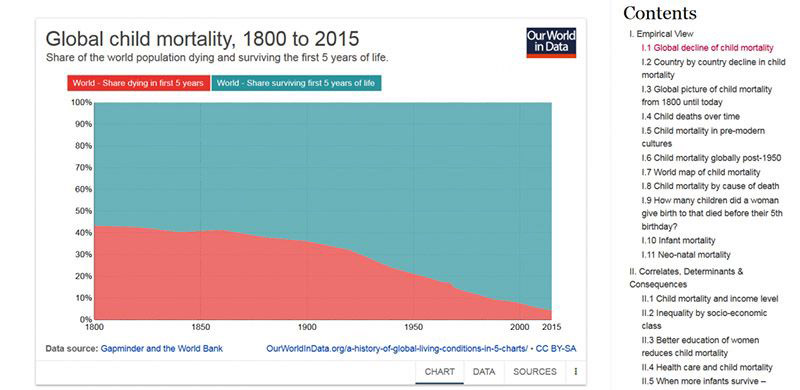(In chronological order)
General history – Tulane School of Medicine
In the beginning of the 18th century children were treated as if they were smaller adults. They were mainly cared for by women, midwives, wet nurses and grandmothers.
- When a child was sick, doctors generally rejected treating children and referred them to the help of a midwife.
- Infant mortality rate was very high in the 1800’s, even in the richest and most progressive countries only 1 out of every 3 children lived past 5 years old. This high mortality rate among young children resulted in high birth rates among families, most women birthed between 4 to 6 children. (source: https://ourworldindata.org/child-mortality/) See graph below.
Fun Fact: It was not uncommon for a family to have 10 or more children.
Sept. 29th, 1834 – The planning of Tulane University School of Medicine, originally known as The Medical College of Louisiana, was announced. The medical school was founded by 3 young physicians new to the city, the oldest being only 26. The three young doctors announced that the classes would be taught in English, which did not sit well with the many French and Creole doctors throughout the city.
Opened on January 5, 1835, the school began with seven physician professors.
It cost what?: All courses cost medical students $20.00
- The Medical College petitioned the Louisiana Legislature for a land grant to build a medical school building, with the stipulation that the faculty would care for the patients of Charity Hospital free of charge for ten years.
- This was the beginning of Tulane’s official involvement with Charity Hospital; the practice of providing physicians to the hospital free of charge went on until the 1960’s. The Legislature granted the request for the first Medical College building, which was erected for $15,000. The building was 3 stories, included a lecture hall, library and reading room, a chemical laboratory, a surgical amphitheater, a museum, 2 small classrooms and a dissection room on the top floor.
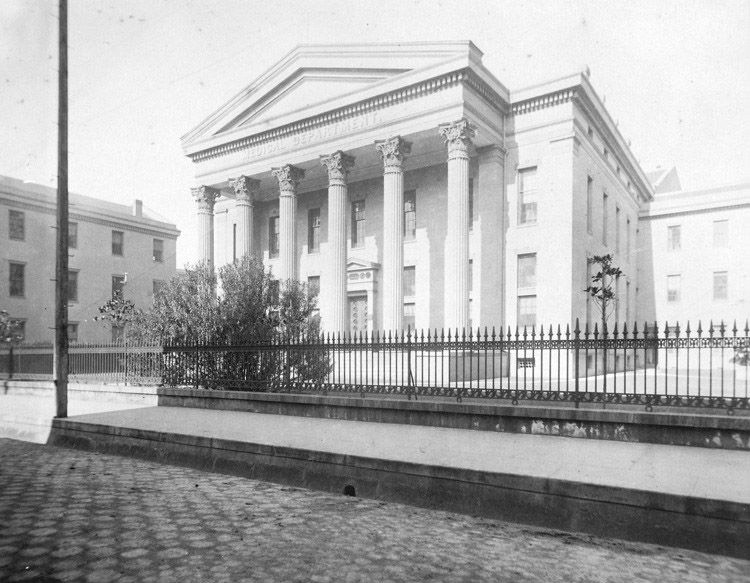
First Medical College of Louisiana Building, built between 1843-47
- Student enrollment had risen to 163.
- Louisiana Legislature created the University of Louisiana; the Medical College of Louisiana was then absorbed into the newly created state university becoming the Medical Department for the University of Louisiana.
Scared Yellow?: The 1851-52 session began on November 17th and ended on February 26th to avoid the Yellow Fever season.
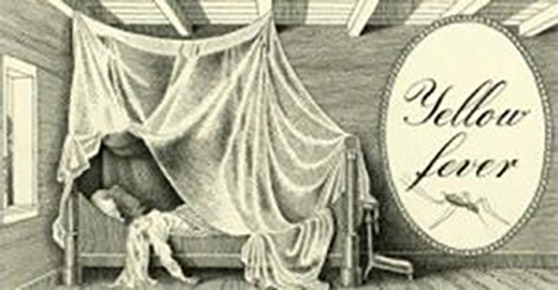
Civil War Years 1861-1865
New Orleans surrendered to the Union army. The Medical College was closed during the war as most of its staff, faculty, and students had joined the Confederate Army.
- Before closing for the remainder of the war in October 1862, enrollment dropped from 402 to 94.
In 1862, during the Civil War and due to a severe shortage of surgeons, a twenty-one year old medical student name Ernest Lewis was made the house surgeon of Charity Hospital.
Picture of Ernest Lewis.
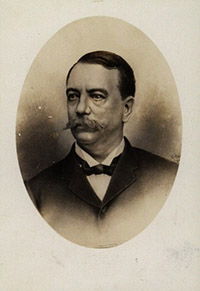
In 1882 Faculty pressured hospital administrators to open a ward specifically for children.
A ward for male children was established, with female children still being sent to the adult ward.
Having acquired his fortune in New Orleans, a wealthy merchant originally from Princeton, N.J, named Paul Tulane, donated almost 1 million dollars to the City of New Orleans to improve higher education.
Ratified on April 22, 1884, Act 43 of the 1884 Louisiana legislative session officially turned the University of Louisiana into Tulane University.
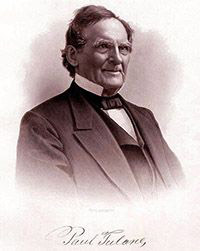
In 1890, Medical School costs $50 per month during the school term.
Tulane School of Medicine created a free-standing Department of Disease of Children, which was the precursor of the division of Pediatrics.
In 1909, Dean Isadore Dyer initiated the Ivy Day tradition, when a sprig of ivy was transplanted from the old Richardson Memorial Building downtown to the new Richardson Memorial Building uptown.
Department Chairmen
Dr. William Walton Butterworth, Professor of Diseases of Children (Department of Pediatrics has not yet been fully formed) from 1908 -1919
At the time, there were no regulations on how milk could be served, stored, or diluted before being sold to the public. There were many instances where the milk purveyor would dilute milk with plaster of Paris or chalk.
Dr. Butterworth led a survey of the health of children in the City of New Orleans, finding that many infants died due to gastrointestinal infections that were caused by bottle feeding babies with contaminated milk. He became a champion of “pure milk” and guided the formation of the Pure Milk Society, which transformed into the Child Welfare Association of New Orleans.
- In the time of Wet Nurses, it was believed that the temperament of the nurse would transfer through her milk into the baby. Or, that the nurse’s appearance was an indicator of personality traits and moral character.
- In 1915, during Dr. Butterworth’s tenure, women were admitted to Tulane’s Medical School.
- Between 1916 and 1918, the Department of Diseases of Children changed to the Department of Pediatrics.
Dr. Lawrence Richard DeBuys, Chairman of Pediatrics from 1919 -1929
In 1926, he was appointed as member of the original “White House Conference on Child Health and Protection” by President Herbert Hoover.
- He published about 60 papers on various pediatric subjects.
- Dr. DeBuys was the 1st president of the Louisiana Pediatric Society
Dr. Robert Alexander Strong, Chairman of Pediatrics from 1929-1942
Dr. Strong joined the Tulane medical faculty in 1911.
- His time at Tulane was interrupted by his service in World War I, beginning in 1917.
- Dr. Strong’s time in the military during WWI was spent in a traveling laboratory railroad car called “Metchnikoff” which investigated meningococcal meningitis prevailing in the different army camps at the time.
Dr. Ralph Victor Platou, Chairman of Pediatrics from 1942-1966
Dr. Platou was graduated from the University of Minnesota where he earned his bachelor's, master's, and medical degrees. After serving a residency at Babies Hospital in New York, Dr. Platou returned to the University of Minnesota' where he became an instructor in the School of Medicine. In 1942 he came to Tulane as an Associate Professor of Pediatrics and was promoted to Chairman in 1944. He was also a senior visiting physician and chief of the Tulane Pediatric Service at Charity Hospital. A handsome, enthusiastic and dynamic man with a passion for teaching, and an astute diagnostician who loved medical oddities, he was extremely popular with medical students and house officers. In his 25 years in New Orleans he attracted large numbers of students into pediatric specialization, and interns into his residency training program. In 1966 Dr. Platou left Tulane to become Professor and Head of Pediatrics at the Kauikeolani Children's Hospital in the School of Medicine of the University of Hawaii. In 1968 he resigned from that position to become executive secretary of the American Board of Pediatrics at Bryn Mawr, Pa., of which he was a former president.
Dr. Platou was a member of the American Academy of Pediatrics and served on the editorial board of Pediatrics. He published nearly seventy papers, the best known being those on congenital syphilis and its treatment with penicillin, hand prints in mongolism, and his well-known treatise "Johnny Won't Eat." Dr. Platou published nearly 70 papers during his academic career at Tulane.
Upon his arrival in 1942, Dr. Platou was the only full time member of the pediatrics department and covered the Tulane pediatric ward of Charity hospital alone.
There were two defining characteristics of Dr. Platou; one was his wearing of bow ties and the other was the smoking of his pipe. His bowtie was always slightly askew, with the left side being lower than the right. He also smoked his beloved pipe often, in the office, during rounds, and meetings; as was acceptable at the time.
- In 1960, Dr. Platou became president of the American Board of Pediatrics.
- Dr. Ralph Platou’s father, Dr. Ludvig Platou, was good friends with President Theodore Rossevelt, who once gave a public speech standing on the steps of the Platou family home in North Dakota.
- A memo to Dr. Platou in September of 1959 gave us a look into the fellow and faculty salaries of the 1950’s. The salary for fellows was about $5,000.00, with new faculty making $10,000.00 with an annual raise of $500.00.
Dr. William Waring, Chairman of Pediatrics from 1966-67
Dr. William Waring is a noted Pulmonologist and led the Section of Pulmonology for many year. He served as an interim chairman of the department for a year.
Dr. Norman C. Woody, Acting Chairman of Pediatrics from 1967-71
Dr. Norman Woody was well known as an accomplished neonatologist and he initiated the first neonatal fellowship training program in the state of Louisiana. During his time as acting chairman, Dr. Woody received the Owl Club Award for outstanding teaching three times. Dr. Norman C. Woody’s wife, Dr. Hannah Woody was also on the Tulane faculty. Both were on the faculty from 1959 to 1979, after which they stayed on as Senior Visiting Physicians until their deaths. Both received multiple teaching awards while at Tulane School of Medicine.
- Dr. Norman Woody discovered and reported in 1955 the first indigenous case of American panosomiasis (Chagas’ disease) in the U.S.
- Dr. Woody received the Gloria P. Walsh Award for prestigious teaching in both 1974 and 1984, the only faculty member ever having done so.
Do you believe in ghosts?: Dr. Norman Woody worked closely with former chairman, Dr. Ralph Platou, for many years beginning with his residency at Tulane in 1942. In 1968, Dr. Woody was the acting Chairman of Pediatrics but had not taken residence in the official Chairman’s office, therefore the office still had all of the personal effects of the recently deceased Dr. Platou. Dr. Woody was working late one night in the Pediatric department at the School of Medicine when he heard a strange noise. He could hear a clanking on the trashcan in Dr. Platou’s deserted office, the same clanking sound Dr. Platou made when he emptied his beloved smoking pipe into the metal trash bin. Dr. Woody then felt a spiritual presence in his room, a mere 20 feet away from the unoccupied chairman’s office, which after a moment vanished.
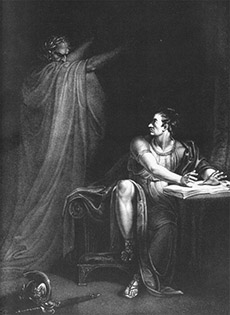
Dr. Harry Cameron Shirkey, Chairman of Pediatrics from 1971-76
Dr. Shirkey strongly advocated for proper drug usage in children and infants. As of 1968, clinical studies were not run to determine safe usage amount for adolescents. Instead, drugs carried an “orphaning” clause stating that the drug was not to be used on children. Dr. Shirkey was an extremely popular lecture speaker who traveled the world doing speaking engagements. In 1976, while in Saudi Arabia on a lecture trip, he was deported due to visa problems. However, he was able to return thanks to the Prince of Saudi Arabi intervening on his behalf.
Dr. Francis (Frank) A. Puyau, Acting Chairman of Pediatrics from 1976-78
Dr. Puyau took board exams for Pediatrics, Radiology, and Cardiology, passing all. He had joint appointments in Radiology and Pediatrics and was responsible for the design of two special procedure rooms in the radiology department at Tulane University Hospital.
Dr. John E. Lewy, Chairman of Pediatrics 1978-2004
During Dr. Lewy’s tenure as chairman, specialty care sections of the pediatric department began to expand. He led the department faithfully until 2004. He passed away in 2007. A dedicated child health advocate, Dr. Lewy enjoyed teaching residents about advocacy. Dr. Lewy earned his M.D. from Tulane in 1960, followed by an internship, residency (1961-'64) and pediatric nephrology fellowship (1965) in Chicago. He then joined the faculty at Cornell University Medical College, New York, before returning to Tulane to chair the Department of Pediatrics at Tulane University, New Orleans, from 1978-2004.
In December 2005, he took his advocacy efforts overseas to Benin, West Africa, where he met with 59 pediatricians from 17 African countries for a full day of interactive training on how to advocate for child health. The workshop was designed around the AAP Legislative Conference but focused specifically on issues affecting children in Africa. After he retired, he and his wife moved to Washington, D.C., so he could continue his advocacy efforts on behalf of children through his work with the Committee on Federal Government Affairs as chair (2002-'06) and Committee on State Government Affairs. He also served as a member of the AAP Sections on Nephrology, Seniors, and Administration and Practice Management and was involved with several AAP Louisiana Chapter committees.
The John Lewy, MD Annual Pediatrics Grand Rounds Lecture was established in his name.
Dr. William Gill, Interim Chairman of Pediatrics 2004-2007
Dr. Gill served as the Section Head of Neonatology and the Director of the Neonatal Intensive Care Unit. In 2004, Dr. Gill became the interim Department Chair after the retirement of long-time Pediatrics Chairman, John Lewy. Hurricane Katrina prolonged his tenure in that position until February 2007 when Dr. Samir El-Dahr took over as Department Chair. Since that time, Bill has served as Vice-Chairman of the department until moving to faculty emeritus and retiring in 2012.
Dr. Samir El-Dahr, Chairman of Pediatrics 2007- Current
Dr. El-Dahr is the current Chairman of Tulane Pediatrics. A long time faculty physician/educator/researcher in the section of Nephrology, Dr. El-Dahr stepped up to lead the department's recovery post-Hurricane Katrina. Early in his tenure, many pediatric specialties were rebuilt and refocused to provide health care in areas of need. He oversaw the establishement of several partnerships with local community health centers and schools, as well as development of a mobile health care unit. In December 2014, he along with the pediatrics faculty oversaw the final development and implementation of moving pediatric patient services to Tulane Lakeside Hospital, thus becoming Tulane Lakeside Hospital for Women and Children in Metairie, LA. The only hospital facility solely dedicated to the care of children and women's healthcare in Jefferson Parish. On November 1, 2018, Dr. El-Dahr along with Dean Lee Hamm engineered a new partnership with Children's Hospital New Orleans. The partnership allows the department to join forces with the Children's Hospital network of physicians. The inpatient units closed at Tulane Lakeside Hospital and moved to Children's Hospital on March 1, 2019.
Honorable Mention
Dr. Margaret Smith
Dr. Smith was one of Dr. Ralph Platou’s first recruits when he became Chairman in 1942. She was an advocate for the care of children to transition from “sick baby” to “whole child”; recognizing the need to expand pediatrics into subspecialties and preventative care. Dr. Smith was a pioneer in the establishment of the subspecialty of infectious diseases; she won the Mead Johnson Award for her efforts in 1953.
Fun Fact: In 1977, Dr. Smith was the second woman to become president of the American Pediatric Society.
Sources:
http://tulprimo.hosted.exlibrisgroup.com/primo_library/libweb/action/di…
http://www.tulane.edu/~matas/historical/charity/charity2.htm
http://www.tulane.edu/~matas/historical/medschool/founders.htm
Fossier, A.E. History of medical education in New Orleans, from its birth to the Civil War. New York : Hoeber, [1935?] Original pamphlet. Reprinted from: Annals of Medical History, 6(5):427-447 1935. (In PDF Format)
Catalogue of the Alumni, 1834 to 1901 Inclusive, of the Medical Department of the Tulane University of Louisiana. Historical Summary. (In PDF Format)
The Charity Hospital Reports - https://digitallibrary.tulane.edu/islandora/object/tulane:p15140coll25
http://www.tulanelink.com/tulanelink/act43_03a.htm
http://www.tulane.edu/~matas/historical/charity/charity3.htm
http://www.tulane.edu/~matas/historical/charity/charity.htm
http://www.neatorama.com/2011/01/17/the-fight-for-safe-milk-swill-milk/
Pictures:
http://www.nola.com/health/index.ssf/2017/05/closed_hospitals_of_new_orlean.html#incart_m-rpt-2
http://www.leh.org/knowla-the-digital-encyclopedia-of-louisiana/
